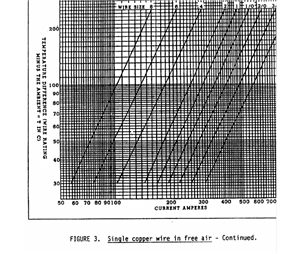Looking at 16mm wire not worrying about voltage drop. manufacturers are ratting this at 110A and on a forum I subscribe to people have been advised 125A is ok.
The cable is rated at 70 deg as shown on the suppliers site linked below.
16mm supplier
Am I wright that this comes under
Table 4D1A
Single-core 70°C Thermoplastic Insulated Cables, Non-Armoured, with or without Sheath
Reference Method C (clipped direct) This will be between battery to battery not in any conduit or insulation
So is rated as 87A
I would be interested in your advice as it has been several years since I used these tables


